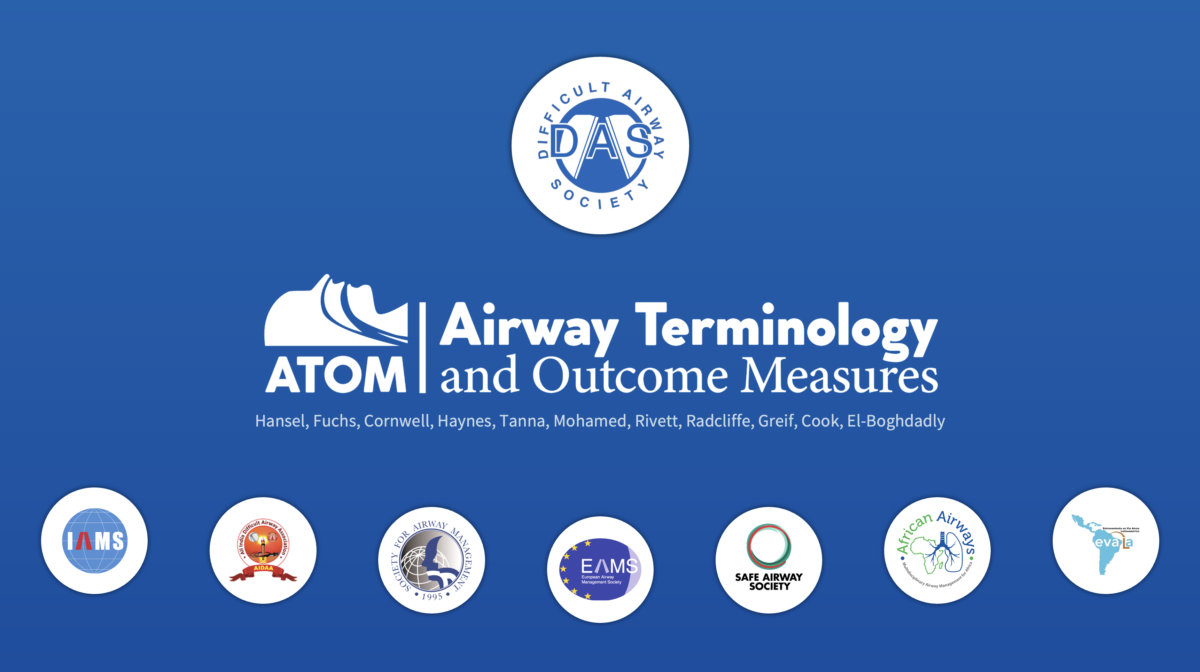We’re delighted to announce that the full manuscript of the ATOM project – titled “A core outcome set for airway management research” – is now published and available open access in Anaesthesia.
The Plain Language Summary is available here.
Why this matters
Research into airway management has long suffered from heterogeneity in outcome definitions and reporting. That makes it difficult to compare studies, to combine results via systematic review or meta-analysis, and ultimately to translate findings into practice. In our work, we aimed to bring clarity and consensus by developing a core outcome set (COS) for airway management research.

What we did
- We carried out a systematic review and identified a large number of candidate outcomes from airway management studies.
- We engaged an international stakeholder group including patients (with personal airway management experience), clinicians who manage airways, and researchers/policy-makers, through a modified Delphi survey.
- We achieved agreement on the final list: 11 outcomes (including death, cardiac arrest, serious complications, pulmonary complications, neurological complications, airway trauma, unrecognised oesophageal intubation, hypoxaemia, first attempt success without complications, overall success without complications, difficult airway).
- We also developed suggested measurement instruments for each outcome to support standardised reporting.
You may also recall that we collaborated with patient partners throughout to develop engaging materials and shape our research. One such output was a brief explainer video which was translated into five languages (Spanish, German, Italian, French).
What this means for the airway management community
Future trials and observational studies of airway management interventions now have a recommended, consistent minimum outcome set to work with. That means improved comparability across studies.
Journals, funders and guideline developers may increasingly expect or require use of this core outcome set, which may strengthen evidence-synthesis and guideline development.
Ultimately, research done with this standardisation may translate more readily into improved clinical practice and patient safety.
How you can use it
We encourage investigators designing airway management studies in anaesthesia, critical care, emergency medicine, pre-hospital or other settings to consult the published manuscript, adopt or adapt these outcomes, specify them in their protocol, and report them in full.
Also, journals and editors can reference this work when evaluating outcome reporting in submitted manuscripts. They may also challenge investigators submitting airway management studies registered from this point forward as to the rationale for not reporting outcomes from this set.
And clinicians and guideline panels may use the ATOM outcome set to interpret future airway management research more easily.
About the paper
The paper is open access and PubMed indexed. We would encourage you to cite it as follows:
Hansel J, Fuchs A, Cornwell B, Haynes K, Tanna V, Mohamed A, Rivett K, Radcliffe G, Greif R, Cook TM, El-Boghdadly K; ATOM Collaborators. “A core outcome set for airway management research.” Anaesthesia. 2025; doi: 10.1111/anae.70026.
We would love to hear from you if you are designing an airway management study and plan to adopt this core outcome set. Let us know how we can support the process.
Thanks
A huge thank you to all participants who contributed via the Delphi survey and consensus meetings: patients, clinicians, researchers, industry partners and policy-makers. Your time and insight were essential.
We also thank the editorial team at Anaesthesia for supporting open-access publication and dissemination of this work.
Upcoming work…
Stay tuned for future work from ATOM. There is a whole host of terminology that we have yet to agree.

